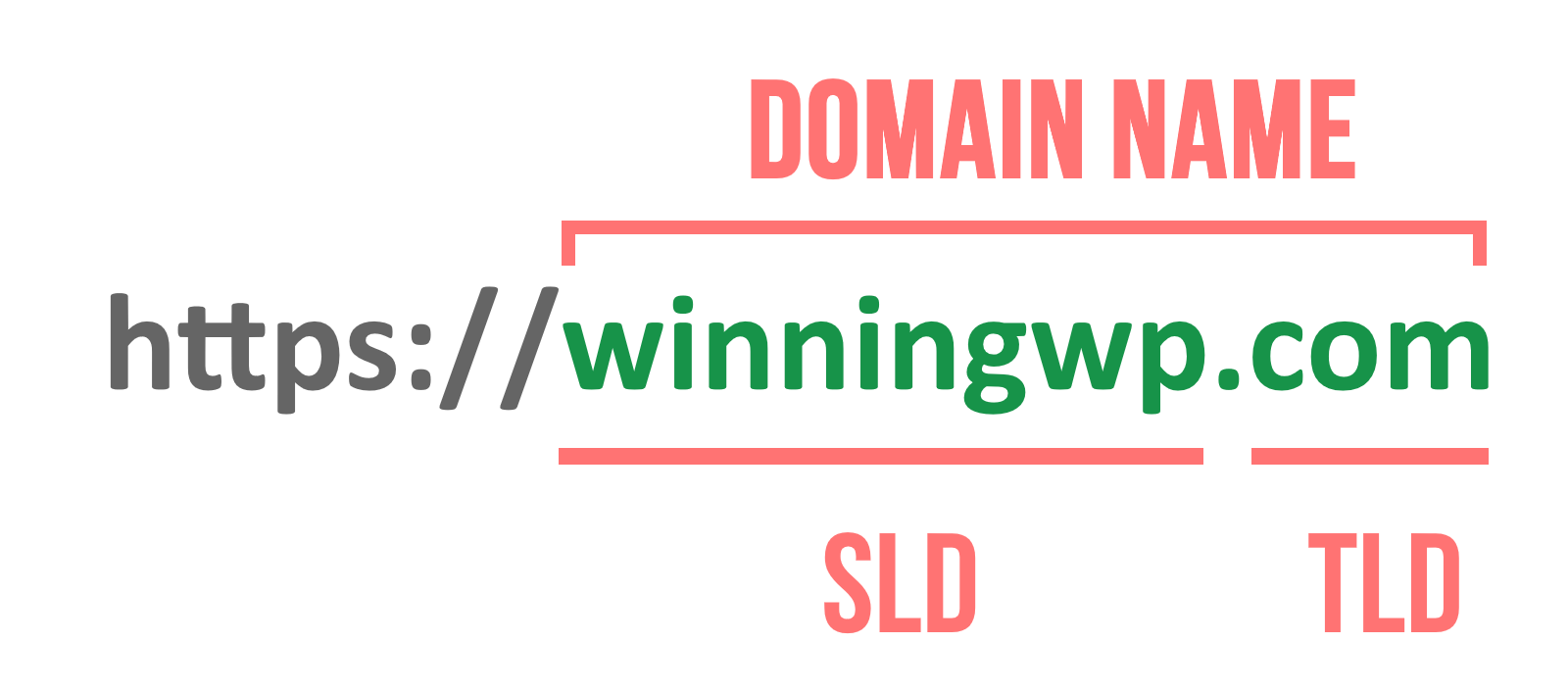- By
“What is a subdomain?” – you ask. Well, the most popular definition says that a subdomain is a subset of a larger domain name. But that doesn’t sound very much like English, does it?
Let’s make it easier to grasp with an example. First, a standard domain name:

As you can see, a normal domain name has a couple of components to it, the two most significant ones are:
- TLD – Top Level Domain – also commonly referred to as a domain extension. This part is your familiar
.com,.net,.org, or whatever else your domain extension is. - SLD – Second Level Domain – this is the part that you get to choose when registering your new domain name. It’s your unique domain name identifier.
Now, here’s your answer to what is a subdomain:

At face value, it’s very similar. The core difference with it is the one additional word to the left of the domain’s SLD (in our example – blog). That additional part is your subdomain identifier.
In that light, a subdomain is sort of a domain name that’s part of a larger domain name. Or, as some people like to call it, a subdomain is a child domain of a larger, parent domain.
Two questions with that: why and how?
Let’s start with the former:
Why you might need a subdomain
“What is a subdomain” is one thing, but why would you need one?
The most common scenario in which a subdomain is used is to organize or divide web content into sections. Meaning, subdomains are great when you want to build an additional, separate catalog of content that would serve a different purpose than what’s on your main domain.
What this means in practice is that creating a new subdomain usually involves launching a new website on that subdomain – a website that’s more or less separate from your main website (the one under your main domain).
Here are some popular examples of what subdomains are used for:
- launching a separate e-commerce store that’s not within your main website; for example, “Joe’s Winery” might want to make their store available under
store.joeswinery.comwhile their main website remains atjoeswinery.com - launching a blog at
blog.YOURDOMAIN.com - launching a forum for your customers or audience to interact with each other at
forum.YOURDOMAIN.com - creating an additional language version of your website at
es.YOURDOMAIN.com - creating subsections of your website for different segments of visitors based on their location; for example, if you try visiting Craigslist while in Philadelphia, you will be automatically redirected to
philadelphia.craigslist.org
These are just some of the possibilities. This very distinct nature of subdomains makes them perfect for creating new websites that appear as if their addresses are completely original.
The idea is to use subdomains only when you have enough content to populate each of them with. Or, alternatively, when you have content or parts of your business that deserve a spotlight of their own. For example, Nike has a whole separate section devoted to careers at jobs.nike.com.
Overall, using subdomains in situations like the above makes things clearer for the visitor. For instance, if they go to store.YOURDOMAIN.com, they know immediately that the page they’re viewing is where they can purchase your products.
Lastly, when you no longer need the subdomain, you can just shut it down with a couple of clicks and redirect all traffic to your primary domain.
How to create a subdomain
There are two parts to the process when creating a new subdomain (once you already have a standard domain name registered):
- Coming up with a subdomain that you want to create.
- Enabling it and then redirecting it to a new website of yours (or to a third party).
No.1 is the simpler stage. Basically, all you need is to do some brainstorming and come up with a short subdomain that fits your reason for having a subdomain in the first place.
In general, the subdomain can consist of any number of alphanumeric characters (a-z, A-Z, 0-9) and hyphens (permitted if surrounded by other characters or digits), with no spaces. But this varies with different domain registrars so you best double check with yours.
Alternatively, you can go for one of the popular subdomains, like the ones mentioned above: store, blog, languages (like es), locations (like philadelphia), forum, events, community, help, news, jobs.
No.2 can be a bit more tricky. That’s because in order to carry the process through, you not only need to enable the subdomain itself, but also point it somewhere on the web. That somewhere can be:
- a section of your existing website,
- a completely new website of yours,
- a third-party website or URL, even.
The exact steps tend to be different depending on your domain registrar and/or web host. For certain, though, things are going to be much easier if you’re with the same company for both your domain name and hosting (we talked about that here). This is because you can usually do all the setting up within a single user panel. Whereas when you have your domain and hosting handled by separate companies, you need to go through the required motions with each.
Here are some links that point to specific how-tos based on where you have your domain name registered:
Lastly, here are some FAQ around the topic of subdomains:
FAQ related to what is a subdomain
“What’s the difference between a subdomain and a domain name?”
- A domain name is your website’s main address on the internet (e.g.
YOURDOMAIN.com). - A subdomain is a “child domain” name that’s under the “parent domain” name (e.g.
blog.YOURDOMAIN.com). You can’t have a subdomain without a main domain name above it.
“Do I need to buy a domain name to be able to set a subdomain?”
- Yes, you can only create a subdomain under a standard domain name that you already own.
“How many subdomains can I create for my main domain name?”
- This depends on your domain registrar. With GoDaddy, for example, you can create up to 100 subdomains per domain name.
“Do I need to pay for new subdomains?”
- Most commonly, no, but this depends on your domain registrar.
“Can I create a separate, new website on a subdomain?”
- Yes, this is actually the most common scenario.
“Can I point a subdomain to an individual piece of content on my current website?”
- Yes, this is potentially a great way to put a spotlight on your most important pieces of content.
Is “www” a subdomain?
- Technically, yes. But it’s a special type of subdomain that usually points to the exact same website as the main domain name. For example,
www.winningwp.comis the same aswinningwp.com.
So there you have it! That has been our answer to the question of, “What is a subdomain?” + how to create one. If you need anything clarified, don’t hesitate to hit us up in the comments. Also, if you want to learn more about domain names, check out our other posts in this series.

